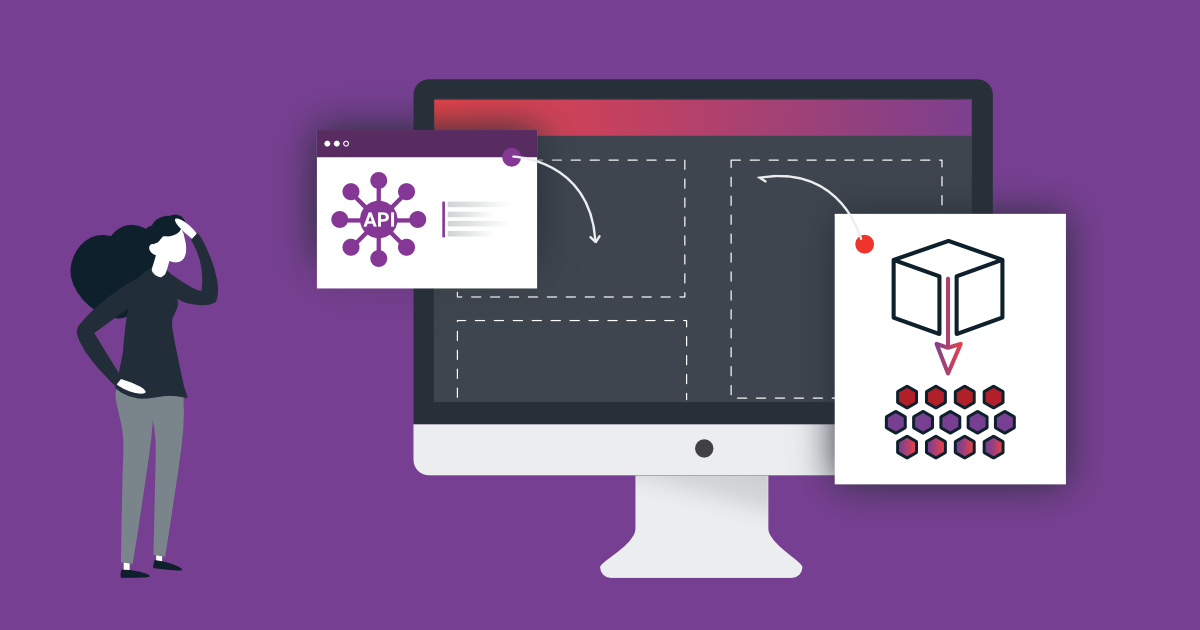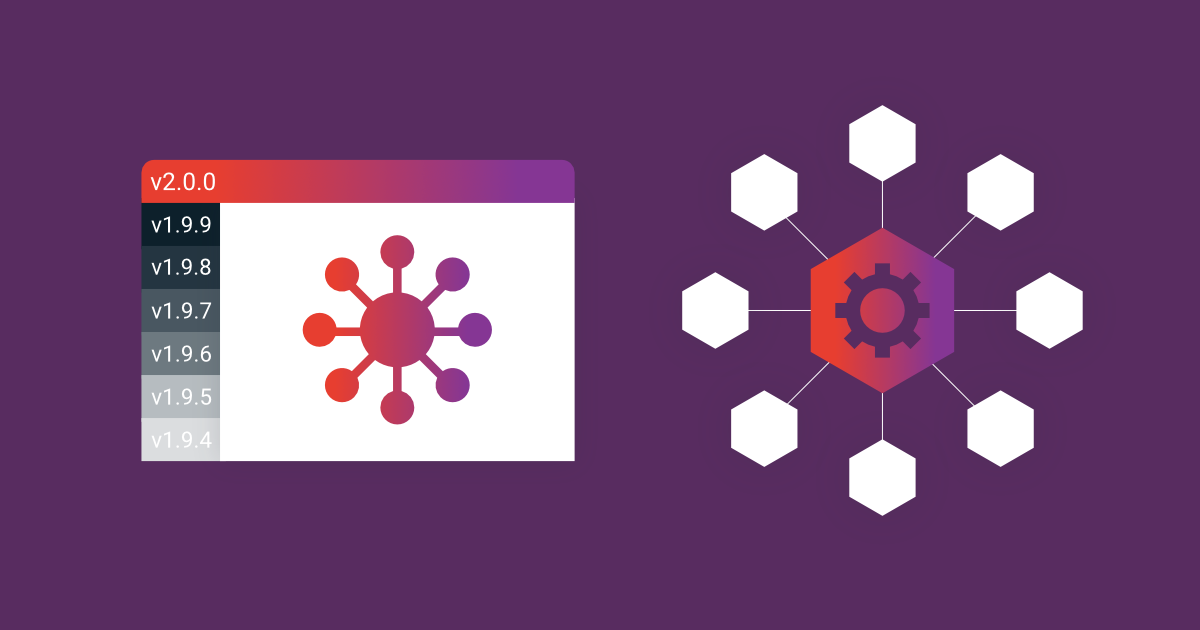As software evolves, changes to APIs are often necessary, and managing these changes can be challenging. One of the key challenges in API development is managing breaking changes - changes that can cause compatibility issues with existing applications that rely on the API.
To address this challenge, developers often use versioning to manage API changes in a structured and controlled way. In this article, we will explore the best practices for managing API changes and breaking changes in versioned APIs. We will also discuss the benefits of versioning APIs, such as the ability to maintain backwards compatibility and improve developer productivity.
What are versioned APIs?
Versioning is an essential part of API development because it enables developers to manage changes to an API in a structured and controlled way, without disrupting the applications and systems that rely on the API. By assigning a version number to each version of the API, developers can communicate changes to API consumers, and enable them to adapt to new functionality or behavior at their own pace. Versioning also helps developers to maintain backwards compatibility - that is, the ability for newer versions of the API to work seamlessly with applications and systems that were built using older versions. By carefully managing changes and deprecating older versions in a systematic way, developers can ensure that their APIs remain reliable and easy to use over time.
Here are some different types of versioning and their pros and cons:
- URL-based versioning: In URL-based versioning, the version number is included in the URL that API consumers use to access the API. For example, the URL for version 1 of an API might be "https://api.example.com/v1". Pros of URL-based versioning include simplicity and ease of implementation, since it does not require any special headers or parameters. However, one downside is that changing the URL can cause disruption to existing API consumers and may be difficult to manage at scale.
- Header-based versioning: In header-based versioning, the version number is included in an HTTP header, rather than in the URL. This approach enables developers to change the version number without modifying the URL, which can be an advantage in certain situations. One potential disadvantage of header-based versioning is that it may require more complex implementation and handling of headers, especially for API consumers who are less familiar with HTTP headers.
- Media-type versioning: In media-type versioning, the version number is included in the media type (e.g., JSON, XML) that the API uses to represent its responses. This approach is sometimes called "content negotiation" and can be useful for managing API changes in a way that is transparent to API consumers. However, it may also require more complexity in the implementation and handling of media types.
- Semantic versioning: Semantic versioning is a standardized versioning scheme that uses three numbers separated by periods, such as "1.2.3". The first number indicates a major release, the second number indicates a minor release, and the third number indicates a patch release. This approach is useful for communicating the scope and impact of changes to API consumers, and for managing dependencies on APIs.
Overall, each approach has its own strengths and weaknesses, and the best choice will depend on the specific needs and constraints of the API and its consumers.
Here are some examples of versioned APIs and how they are used in practice:
- Twitter API: The Twitter API is a widely-used API that enables developers to access data from Twitter, such as tweets, users, and hashtags. The API is versioned using URL-based versioning, with version numbers included in the URL path (e.g., "https://api.twitter.com/1.1"). This approach enables Twitter to manage changes to the API over time, while minimizing disruption to existing API consumers.
- Google Maps API: The Google Maps API is a widely-used API that enables developers to integrate maps and location-based data into their applications. The API is versioned using URL-based versioning, with version numbers included in the URL path (e.g., "https://maps.googleapis.com/maps/api/js?v=3.exp"). This approach enables Google to manage changes to the API over time, while minimizing disruption to existing API consumers.
- GitHub API: The GitHub API is an API that enables developers to access data from GitHub, such as repositories, issues, and pull requests. The API is versioned using header-based versioning, with version numbers included in an "Accept" header (e.g., "application/vnd.github.v3+json"). This approach enables GitHub to manage changes to the API without requiring changes to the URL, and to provide more granular control over the API response format.
In each of these examples, versioning plays a crucial role in enabling the API to evolve over time, while maintaining backwards compatibility and minimizing disruption to existing API consumers. By carefully managing changes to the API through versioning, these companies are able to provide a reliable and robust platform for developers to build on top of.
Why change an API at all?
APIs are an essential part of modern software development, providing a standardized way for applications and services to communicate and share data. However, as the needs of applications and users change over time, APIs also need to be updated and evolved in order to remain useful and effective. There are several key reasons why APIs need to be updated over time.
Firstly, technology is constantly evolving, and new features and functionality are being developed all the time. In order to stay relevant and competitive, APIs need to be updated to support new technologies and standards, such as new programming languages, data formats, or security protocols.
Secondly, user needs and expectations are also changing over time, and APIs need to adapt in order to meet these needs. For example, users may require access to new types of data or functionality, or they may expect APIs to provide faster or more reliable performance.
Finally, APIs also need to be updated to address security concerns and vulnerabilities. As new security threats emerge, APIs need to be updated to incorporate new security measures and protect against potential attacks.
Overall, the need to update APIs over time reflects the constantly changing landscape of technology and user needs. By staying agile and responsive to these changes, developers can ensure that their APIs remain useful and effective over the long term.
What is the difference between non-breaking and breaking changes?
In the context of API development, the terms "non-breaking" and "breaking" changes refer to the impact of changes to the API on existing API consumers. A non-breaking change is a change that does not affect the behavior of existing API consumers, and does not require them to make any changes to their code or configuration in order to continue using the API. Examples of non-breaking changes might include adding new endpoints or query parameters, or modifying the response format of an existing endpoint in a backward-compatible way.
On the other hand, a breaking change is a change that does impact the behavior of existing API consumers, and requires them to make changes to their code or configuration in order to continue using the API. Examples of breaking changes might include removing an existing endpoint, changing the input format of an existing endpoint in a non-backward-compatible way, or modifying the response format of an existing endpoint in a way that breaks existing client code.
The impact of breaking changes can be significant, as they may require existing applications and services to be updated or reconfigured, and can lead to downtime or other disruptions. As a result, API developers need to be careful when making changes to the API, and should strive to minimize the impact of breaking changes by providing clear documentation, versioning the API, and communicating changes to API consumers in advance.
What are the risks and benefits of making breaking changes?
Making breaking changes to an API can carry both risks and benefits. On the one hand, breaking changes can allow API developers to introduce significant new features or functionality that would not be possible with non-breaking changes. For example, making a breaking change might enable developers to adopt a new data format, introduce a new authentication mechanism, or remove deprecated features that are no longer necessary. Breaking changes can also help to keep the API up-to-date and relevant, ensuring that it remains useful and effective for its users.
However, there are also several risks associated with making breaking changes. Perhaps the most significant risk is that breaking changes can break existing client applications that are relying on the old behavior of the API. This can lead to downtime, data loss, and user frustration, as clients may not be able to access the data or functionality that they need. In addition, breaking changes can require significant development effort on the part of API consumers, who may need to update their applications or services to work with the new API. This can be costly and time-consuming, and can also lead to compatibility issues if different clients update to different versions of the API at different times.
To minimize these risks, API developers should carefully consider the impact of any breaking changes, and should communicate them clearly to API consumers in advance. This might involve providing detailed documentation, hosting webinars or other training sessions, or offering support for developers who are updating their applications to work with the new API. API developers should also consider providing migration paths or compatibility layers that allow existing clients to continue working with the old API for a period of time, while they update their applications to work with the new API.
Best practices for managing API changes
Effective management of API changes is crucial to maintain the stability, reliability, and usefulness of an API over time. Here are five best practices for managing API changes:
- Document changes: Keeping clear and up-to-date documentation is essential for managing API changes. This can help API consumers understand the impact of changes and how to update their code and configurations to work with the new API version. It is important to document changes and version numbers, and use version control to track changes.
- Communicate changes: Clear and timely communication is critical to managing API changes effectively. API developers should notify API consumers of changes in advance, provide a migration path or compatibility layer, and offer support and training for API consumers.
- Test for backwards compatibility: Testing is an essential part of managing API changes, and API developers should make sure to test for backwards compatibility to ensure that existing applications and services will continue to work with the new API version. Setting up a testing environment that mirrors the production environment, testing all API endpoints and methods, and verifying that existing code and configurations continue to work with the new API version is crucial.
- Keep the API stable and reliable: Managing API changes requires balancing the need to add new features and functionality with the need to keep the API stable and reliable. API developers should consider the impact of changes on existing clients, strive to minimize breaking changes, and use versioning to manage changes over time.
- Monitor and analyze usage data: Monitoring and analyzing API usage data can help API developers understand how API consumers are using the API, which features are most important, and where there may be areas for improvement. Using analytics tools to monitor API usage and performance, collecting feedback from API consumers, and using data to inform API development and improvement efforts is crucial.
By following these best practices, API developers can minimize disruptions to API consumers, ensure that the API remains useful and effective over time, and maintain a positive user experience. Implementing these best practices involves a deliberate and careful approach to managing API changes, with a focus on clear communication, thorough testing, and maintaining stability and reliability.
Keeping the API stable and reliable throughout the change management process is crucial for maintaining the trust and confidence of API users. APIs are often used in mission-critical applications and services, and any disruptions or issues can have significant consequences for users. In addition, APIs are often used by third-party developers who rely on the stability and predictability of the API to build and maintain their own applications.
Failing to maintain stability and reliability throughout the change management process can lead to a loss of trust and confidence among API users. This can result in increased support requests, slower adoption of new API features, and even the loss of customers or users. By following best practices for API management and prioritizing stability and reliability, developers can build and maintain APIs that are trusted and valued by users.
Here are some real-world examples of API management best practices in action:
- Slack API: Slack is a popular communication platform that offers an API for integrating with other tools and services. The Slack API documentation includes clear and comprehensive guides for developers, including upgrade guides for major changes to the API, detailed API reference documentation, and a change log that highlights changes and their impact on existing clients.
- Amazon Web Services (AWS): AWS uses a versioning system for its APIs and maintains detailed documentation for each version. The documentation includes information about changes between versions, including breaking changes, and provides guidance on how to migrate to new versions. AWS also uses a beta program to allow users to test new versions of APIs before they are released to the public, which helps to identify and address potential issues before they become problems.
- Twilio API: Twilio provides a cloud communications platform that allows developers to build voice, video, and messaging applications using APIs. Twilio uses versioning to manage changes to the API, and provides detailed documentation and guides for upgrading to new API versions. Twilio also offers a change log and a deprecation policy to help developers plan for changes and upgrades.
In each of these examples, the companies have taken a deliberate and thoughtful approach to managing API changes. They have provided clear documentation and guides, used versioning to manage changes over time, and offered testing and sandbox environments to allow developers to test their integration before deploying to production. By following best practices for API management, these companies have been able to maintain stable and reliable APIs that continue to provide value to their users over time.
How to handle breaking changes
Handling breaking changes in an API involves several steps, including versioning, deprecation, and migration strategies.
Versioning is the process of creating new versions of an API to introduce changes and maintain backwards compatibility with existing clients. When making breaking changes, it is important to create a new major version of the API to ensure that existing clients are not impacted. The new version should be clearly documented and include instructions for upgrading from the previous version.
Deprecation is the process of phasing out old features or functionality in the API. This can involve marking a feature as deprecated in the documentation and providing a timeline for its removal. By deprecating features in advance, developers can give clients time to adjust and update their code to use alternative functionality.
Migration strategies are the plans and processes for transitioning existing clients from one version of the API to another. This can involve providing migration tools, documentation, and support to help clients upgrade to the new version. Migration strategies should also include testing to ensure that the new version works as expected and does not introduce new issues or incompatibilities.
Overall, handling breaking changes in an API requires careful planning, communication, and testing. By following versioning, deprecation, and migration strategies, developers can introduce changes to the API while maintaining backwards compatibility and minimizing disruption to existing clients. This helps to ensure the continued stability and reliability of the API, and maintain the trust and confidence of API users.
Examples of how other companies have handled breaking changes and the lessons learned from those experiences:
One example of a company that handled breaking changes in their API is Google Maps. In 2018, Google Maps introduced a new pricing model for their API, which included changes to usage limits and billing. This represented a breaking change for many developers who were using the API, and resulted in some negative feedback and pushback from the developer community.
To address these concerns, Google Maps made a number of changes to their API and communication strategy. They introduced a new "Google Maps Platform" branding to make it clear that the API was part of a larger suite of products, and provided extensive documentation and support to help developers transition to the new pricing model. They also adjusted the pricing and usage limits to be more flexible and affordable for smaller-scale applications.
Through these efforts, Google Maps was able to successfully handle the breaking changes to their API and maintain the trust and confidence of their developer community. The lessons learned from this experience include the importance of clear and timely communication, flexible and affordable pricing, and comprehensive documentation and support.
Another example is Facebook's Graph API, which has undergone several breaking changes over the years. In response to feedback from developers, Facebook introduced versioning and deprecation strategies to help manage these changes. They also implemented a comprehensive testing and quality assurance program to ensure that changes to the API were thoroughly tested before release.
These efforts have helped Facebook to maintain the stability and reliability of their API, and minimize disruption to their developer community. The lessons learned from this experience include the importance of versioning, deprecation, and testing, as well as the value of listening to feedback and responding to the needs of the developer community.





